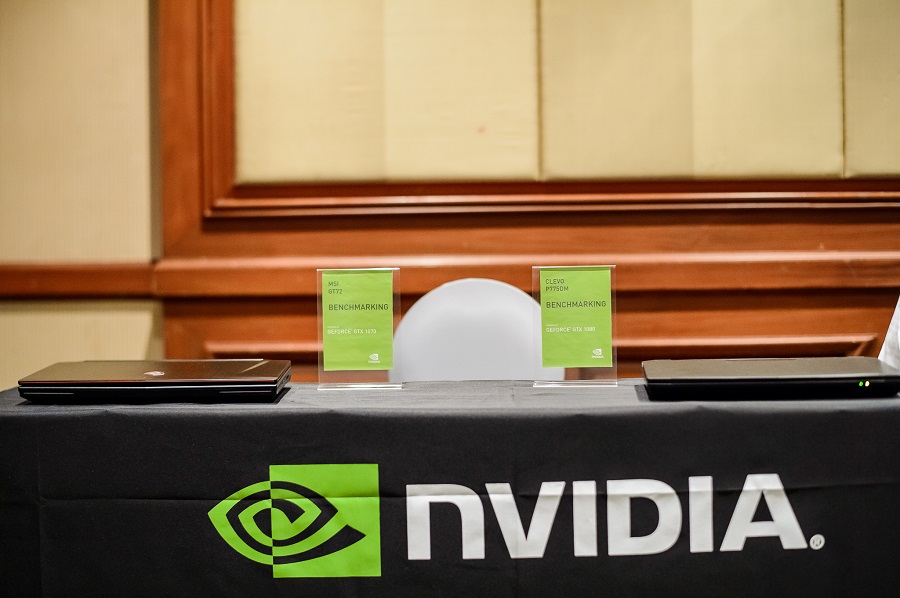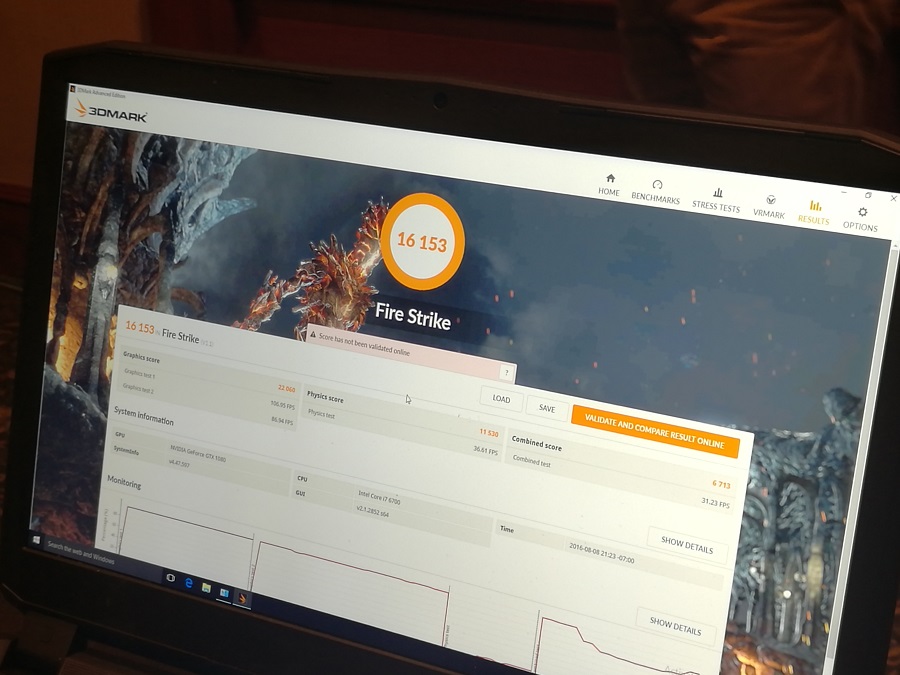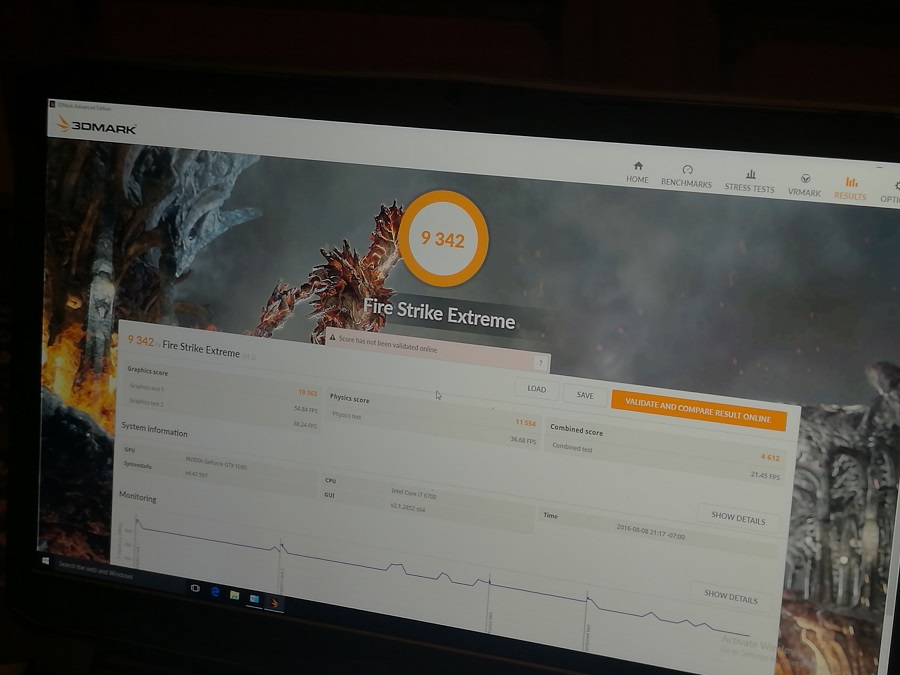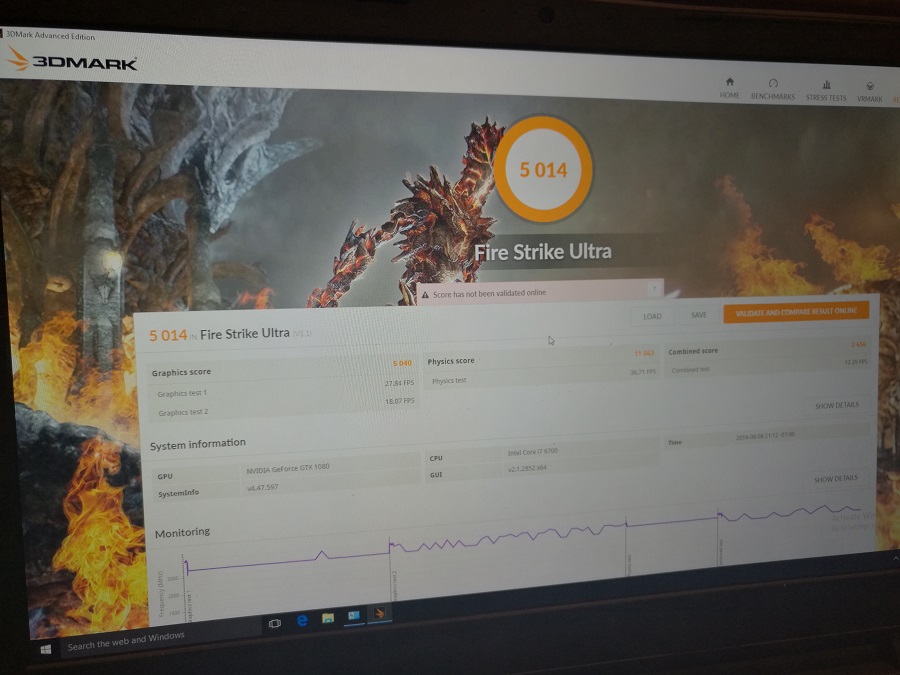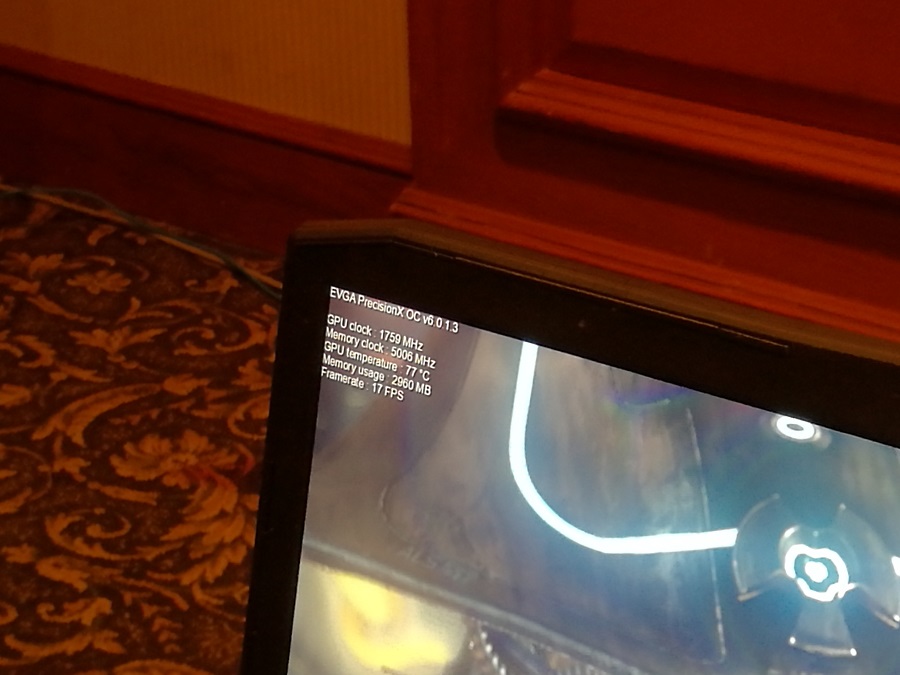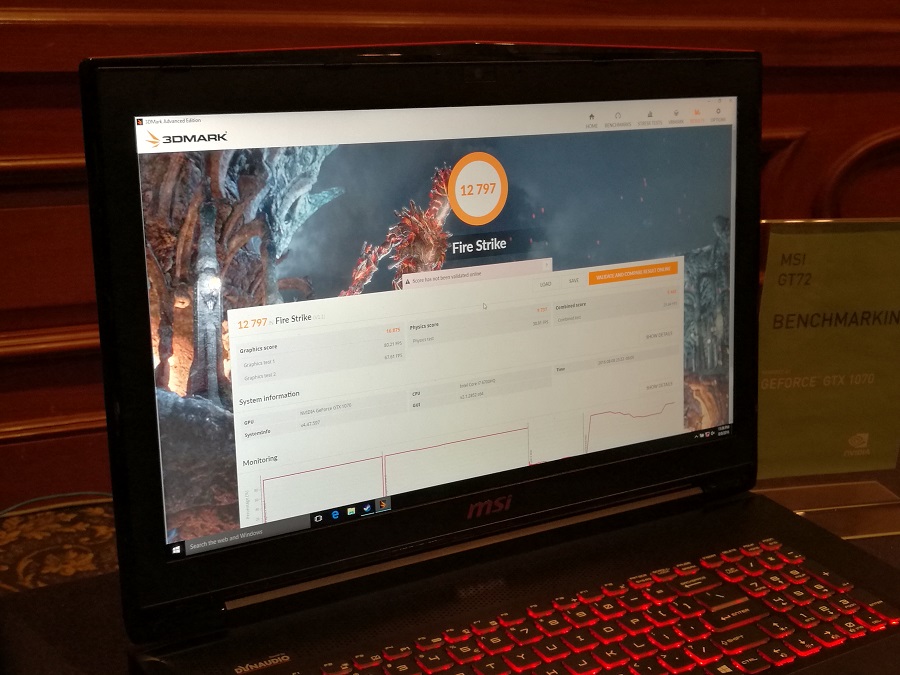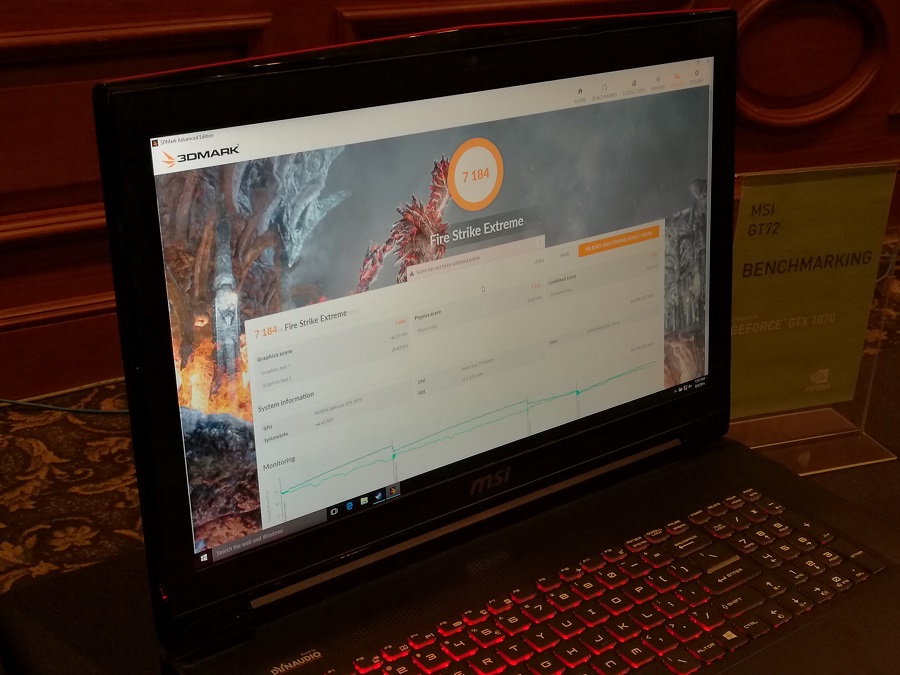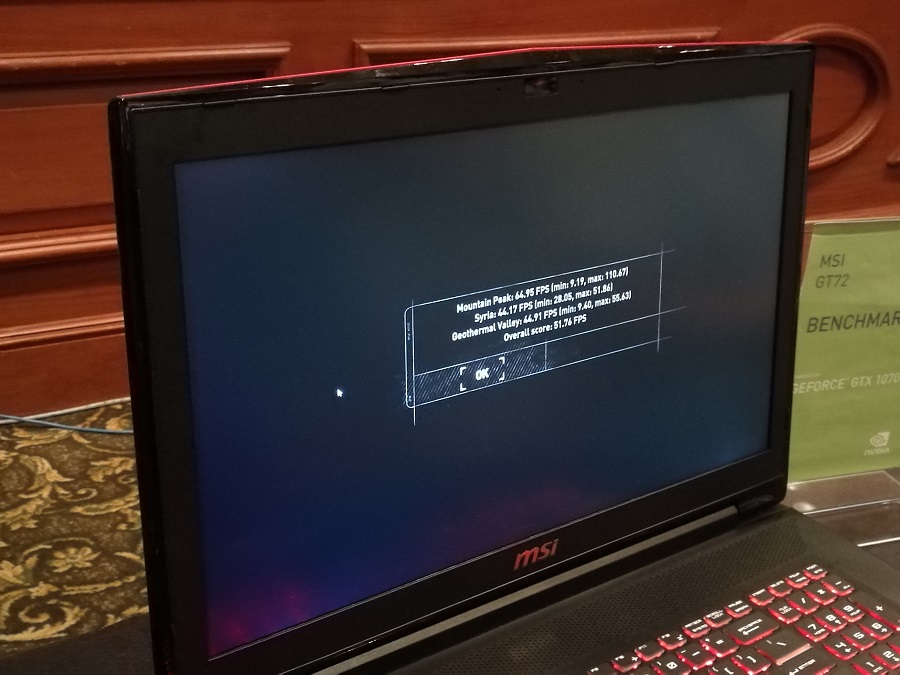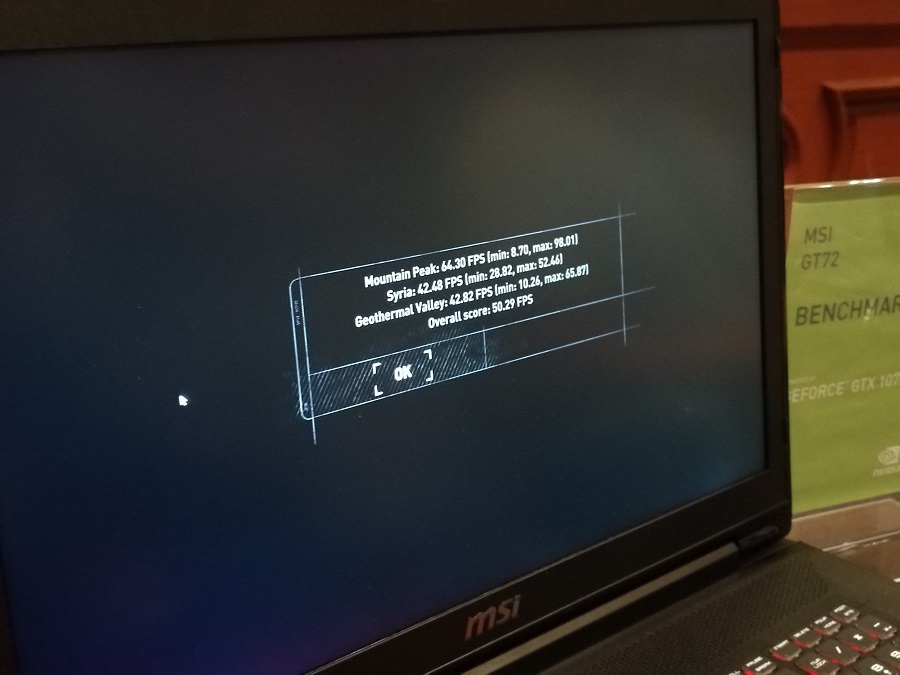Nvidia has had some really interesting things to say about their notebook-based Pascal GPUs during the reveal, so it is no surprise that we would like to see if what Nvidia is saying about their mobile Pascal GPUs proves to be true, or if its merely hot air. Luckily for us, Nvidia has been kind enough to provide us with two laptops that are equipped with the GTX 1070 and the GTX 1080, so we’re able to see for ourselves just what exactly you can expect from the mobile Pascal GPUs. Without further ado, let’s get on with the tests.
CLEVO P755DM (GTX 1080) Benchmarks
For the GTX 1080 benchmark, Nvidia has provided us with the CLEVO P775DM laptop. The synthetic benchmarks that we’ve run on the GTX 1080 includes 3DMark Fire Strike, Fire Strike Extreme and Fire Strike Ultra. We’ve skipped over Time Spy as running the test resulted in severe artifacting, something we’ve attributed to lack of a proper driver as we’ve tested it before it was officially announced. Without further ado, here are the results of the tests.
As the numbers show, the laptop’s version of the GTX 1080 comes damned close to matching its desktop counterpart. For comparison, our previous tests with the GTX 1080 Founders Edition has it score 5,026 on Fire Strike Ultra without OC. This means that the GTX 1080 on the laptop, despite its lower TDP, can perform just as well as the desktop GTX 1080.
Moving on, we’ve tested out Rise of the Tomb Raider on the laptop as well, on both DirectX 11 and DirectX 12. The game was tested at 1920×1080 resolution with all graphics settings maxed out. The results are as follows:
As the results shows, the laptop manages to run the game at the high 60s on both DirectX 11 and DirectX 12. Seeing as the laptop only comes with a 1080p screen, we’re unable to test out how the game would run on higher resolutions.
Temperature-wise, the peak temperature we had with a stock laptop GTX 1080 is 77 degrees celsius, which is pretty standard as far as temperature goes. Of course, peak temperatures will vary depending on the laptops, so expect some difference results when other laptops come into play. Unfortunately, we did not have the time to test out the overclocking potential of the GTX 1080.
Long story short, the GTX 1080 located inside this laptop can rival what the desktop version is capable of.
MSI GT72 (GTX 1070) Benchmarks
Next up on the benchmark list is the GTX 1070, coming in the form of the MSI GT72 laptop. Much like the GTX 1080 above, we’ve first tested the laptop GTX 1070’s capabilities through Fire Strike, Fire Strike Extreme, and Fire Strike Ultra.
A quick Google search (alas, we did not get a desktop-class GTX 1070 for review) reveals that the laptop version of the GTX 1070 doesn’t perform quite as well as its GTX 1080 counterpart, with scores for the laptop-based GTX 1070 being roughly a thousand points less than its desktop counterpart. But then again, Nvidia did mention a 10% variance in performance when it comes to comparing the desktop card and the laptop card, so the results aren’t exactly surprising.
Next up, Rise of the Tomb Raider. Much like the GTX 1080, we’ve tested the GTX 1070 on both DirectX 11 and DirectX 12. The results are as follows:
As for peak temperature, the GTX 1070 is somewhat similar to the GTX 1080, reaching a peak of 75 degrees celsius. Again, no overclocking was done on the laptop as we were do not have the time for it.
So there you go, this is what you can expect from the laptop versions of the GTX 1070 and the GTX 1080. While we did not manage to personally benchmark the GTX 1060, the results shown by both the GTX 1080 and the GTX 1070 is able to paint a picture as to what to expect from the notebook-class GTX 1060. To summarize, Nvidia’s notebook-based Pascal GPUs are going to making laptop gaming great again!


